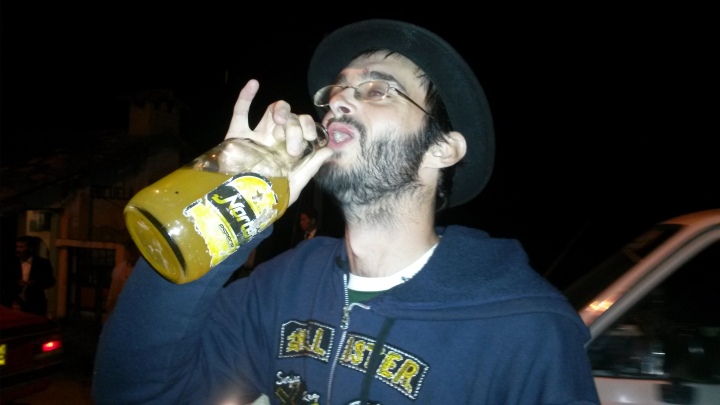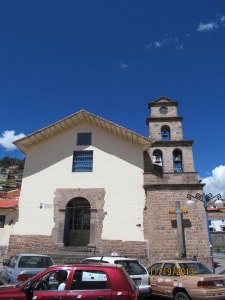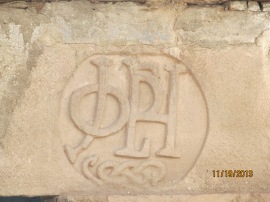Airports and Migration:
After a short, but relaxing flight I arrived at the airport in Miami, I had about 5 dollars in my pocket. I was truly thrilled my Miami’s new immigration system for US passport holders. The new system has automated registration kiosks, about a 20 machine replace the 4-5 minute interview with the customs agents with a two minute process in which you scan your own passport, answer the customs forms, have your picture taken and your thumbprints registered. There was virtually now wait at all for these machines and the printout is examined by one customs agent and then you are directed onward. The process was so quick I had a ten minute wait before my bags came off the conveyor belt. Having recently been through Colombia I was pulled aside for an additional baggage scan but I was into the airport right quick, officially back in the United States.
I had a few hours in the airport and was beggining to get super excited fo going home. My screensavers for the past month had been pumpkin pie and baby Julia. Food and family. I was also anticipating Meghan being at home with Julia and that gave me a full house and a little bundleof pure joy to look forward to. At long last I found myself on the last leg of my journey, the flight from Miami to Boston, the end of this expedition, well kind of. I would be back off to Nicaragua an life is one big expedition in the end.
Flights:
Due to my inconveniences at the Panama-Costa Rica border I arrived two days earlier than expected. I spent some time trying to resolve my pending flight from Managua, I couldn’t cancel it at the airport and was told to call customer service to resolve the issue. Unfortunately I couldn’t cancel just the first leg of the flight and had to cancel the whole thing, but the airline gave me a credit toward a future flight as long as it was used within one year of the purchase date. That worked out better than expected. I set out searching for a cheap flight with Spirit Airlines and found a one way a few days later than my anticipated departure, so I ended up with about 3 weeks in the US. On the way back I caught another small issue, Spirit Airlines’ agreement with Nicaragua requires that all passengers destined for Managua have a return flight booked. Having no proof of onward travel the company helped me book the cheapest return flight and told me to call and cancel within 24 hours for a full refund, which I did.
The Holidays:
My dad picked me up at the airport, groggy, stinky but super excited. I arrived the day after a big snow so that made me happy, snow and not sleet is cause for celebration. My sister, Meghan had arrived the day of the big storm, with baby julia in tow, my dad had picked her up in his car, which had no functioning heat with all of Boston trying to get out of dodge, so it took three or four hours for them to get home. Fortunately hours was a quick 90 minutes.
The first week I had Meghan and Julia basically to myself, which was pretty sweet! Julia was now 3 and half months older and twice as heavy as when I saw her in September. She remained the happiest baby with a lot of smiles and patience for Tio Chris. We played, bonded, wrestled and gurgled through the week. Her patience and happiness are no doubt the result of extremely good parenting. My sister is both a natural with children and extremely well versed in a child’s developmental needs. Andreu, when he finally arrived, made an excellent teammate and calming influence on Baby Julia.
The house began to fill up few days before Christmas and I greatly enjoyed the feasts and family. Nothing compares to the house filled with the warmth of the fire, family and friends. The house emptied all too rapidly after Christmas, my siblings and inlaws spread back out to their respective parts of the country. When I arrived I had noticed the serenity of the house in two aspects, noise and air quality. To understand what good pure, defeaning, unadulterated silence can do for someone, one needs to experience the thundering din of Nicaragua, rural and urban, which I presume exists in other cases of impoverished peoples. The purity of air the crispness of winter in New England sharply contrasts with the dense, humid, acrid and smoke-filled air that circulates through the open constructions of Nicaragua. This initial sense of serenity replaced the bustle of the house with its comings and goings.
Closing Out The Trip
The last weeks were filled with many activities, one of the small joys about being home is the many new and untried activities that it presents. I spent time working at my dad’s office where I mounted a TV and fixed a water cooler, I went birdwatching and oystering in Ipswich, I helped my dad fix his plow and of course nothing beats the invigorating activity of stacking would in the cool, crisp, winter air of New England. I also attended New Years events in Boston and visited friends.
I achieved two important tasks while home, both seized upon opportunities that appeared and through no force of my own will. First, I was able to sit down with my parents and communicate with more confidence and effectiveness what I had achieved in Nicaragua and what my goals and plan were for the future. While I always had their blessing, now they can see more of my purpose, vision and future. Second, my aunt sent the things I had accumulated while at GWU to the house in Ipswich. I was thus able to sort through my past lives and store away what might be useful and get rid of things no longer necesarry in my life.
I finally had some time to sit and reflect on life and the passed year. Among many things, I spent 8 months as a loan officer working with microcredit, I had my first failed business and my first succesful enterprise in Nicaragua. I visited four new countries and accomplished my first trip planned and executed by myself. Most importantly I lived alone and financially independent for the first time. All these accomplishments combined with the energy absorbed from teaching in Colombia, sent me back to Nicaragua in energetic and confident form.
- The Site of Many Wonderful Feasts; Past, Present and Future
- Meghan with a Bundle of Julia
- Experimenting with the Facial Hair
- 20 Inches of Crisp Winter at the Fay’s
- Fire Side Family
- A Great Elf and a Cute Elf, You Decide.
- First Night in Boston























































